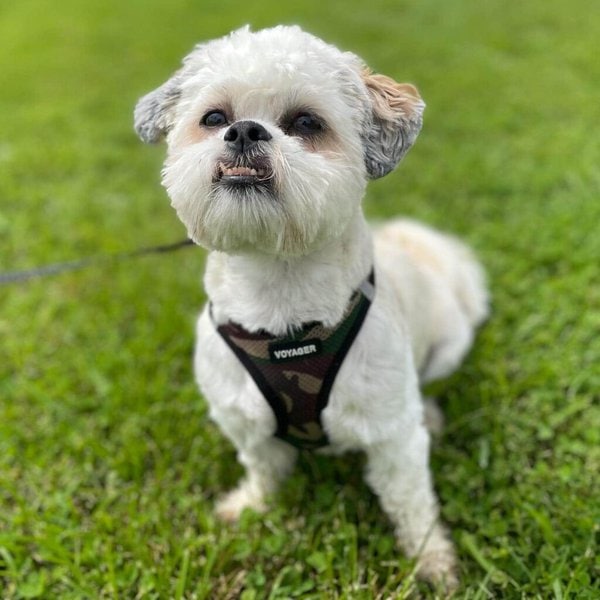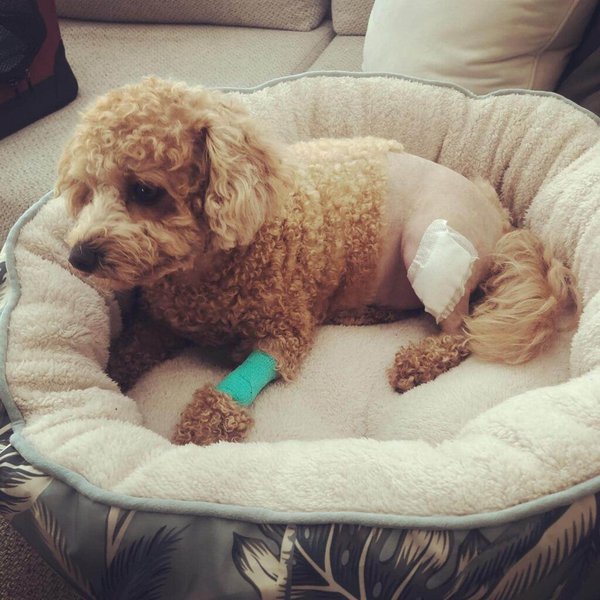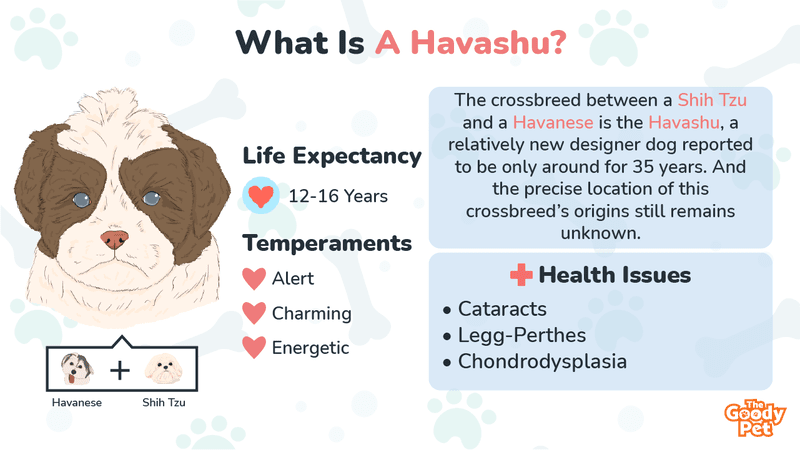Have you ever wondered what you would get if you mixed the spunky Shih Tzu with the gentle and affectionate Havanese?
The origin of the Shih Tzu is Tibet, China, and that of the Havanese is Cuba. The crossbreed between a Shih Tzu and a Havanese is the Havashu, a relatively new designer dog reported to be only around for 35 years. And the precise location of this crossbreed’s origins still remains unknown. The Shih Tzu and Havanese crossbreed might have been a result of the era when breeders strived to achieve designer dogs that would counter the health issues that one of the parents might have been susceptible to.
If you are considering adding a Shih Tzu and Havanese designer dog to your family, stick around as we guide you through everything that you should know and expect from the Shih Tzu and Havanese crossbreed. Before that, let us first understand this designer dog’s appearance, size, and what they are called.
What Is A Shih Tzu And Havanese Mix Called?
The designer dog that results from crossbreeding a Shih Tzu and a Havanese is called a Havashu. Like their parents, Havashus are small and partake in several competitions. Some of the competitions that Havashus participate in include watchdog, obedience, tricks, and agility competitions.
Appearance
The Havashu is a small dog with a whole lot of fur that simply makes you want to snuggle up with them. Havashus have bodies that are just a bit taller towards their back because they tend to have longer hind legs than other dog breeds.
Your Havashu could either have a tail that shoots up, giving them an attentive look, or they could have a tail that curls up. Havashus have rounded heads, floppy ears, short muzzles, and small button noses.
Your Havashu’s fur type is predominantly dependent on its parents’ genes. The fur coat of a Havashu typically ranges between slightly wavy fur and curly fur.
Size
The height of a Havashu typically ranges between 8.5 to 11.5 inches. While the weight of a Havashu ranges between 7 to 15 lbs.

How Long Do Havashu Dogs Live?
On average, the lifespan of a Havashu is between 12 and 16 years. Havashu puppies can live for this long because they are not susceptible to many health issues. A healthy diet and adequate exercise can help your Havashu live a long and healthy life.
Havashus are generally a healthy dog breed, but like all dogs out there, Havashus are also prone to some health conditions. If you are considering getting a Havashu or already have a Havashu, you should be aware of these health issues:
Hip Dysplasia
This degenerative disease results in the weakening of your Havashu’s hip joint because of abnormal development. Hip dysplasia is quite common in several dog breeds.
Even though hip dysplasia is a genetic disease that breeders can identify, it may pop up in puppies bred from dogs who did not have hip dysplasia. It can be treated by means of nutritional supplements, medication, and surgery in extreme cases.
Legg-Perthes
Legg-Perthes results in the deformation of the joint ball in your Havashu’s hip. It initially reduces the blood supply to the top of the bone femur. This reduction in blood supply continues until your dog’s bone dies and eventually becomes deformed.
Your Havashu would subsequently develop arthritis, or its hip joint would become inflamed. The cause of Legg-Perthes is still unclear, but it may be a genetic condition or a result of an injury incurred.
Deafness
As you can assume, deafness is quite a huge impairment for a dog. Sometimes your dog’s loss of hearing can be cured by means of surgery or medication. However, deafness is often a condition that cannot be cured.
If your Havashu loses their sense of hearing and becomes deaf, you should exercise some patience and care. You should help them adjust to their new lifestyle. Luckily, several products on the market can make your deaf Havashu’s life just that much easier.
Chondrodysplasia
Chondrodysplasia is a genetic health issue associated with the unusual growth of your Havashu’s cartilage. It can further be described as canine dwarfism. One of the most distinguishable indications of chondrodysplasia is the short limbs of your Havashu.
The severity of chondrodysplasia differs from dog to dog. Dogs with less severe forms of chondrodysplasia can live a relatively normal life, while others may be crippled by this health issue. Havashus affected by chondrodysplasia is also prone to obesity.
Heart Murmur
Heart Murmur refers to the abnormalities associated with your Havashu’s blood flow. Heart Murmurs are caused by aggressive blood flow within your Havashu’s heart. There are five different grades of heart murmurs.
These five grades of heart murmurs are ranked based on the murmur’s audibility. Heart Murmurs are generally indicative of an underlying disease that requires treatment which may include a change of diet, exercise reduction, or medication.
Cataracts
This health condition is an inherited condition. Dogs who have developed cataracts gradually lose their sense of sight because of the opacity of their lens. The eye affected by a cataract will look cloudy. This condition usually manifests in older dogs.

How Do You Care For Havashu?
Physical Activity
The Havashu breed does not require lots of physical activity. However, this does not mean that you can get away with not allowing your Havashu to exercise at all. Even though Havashus are small dogs, they are quite energetic.
A jog or playtime in a park or garden would do your Havasu some good. Havashus are a curious breed that would thoroughly enjoy walking in the neighborhood. You can also include some agility training in your Havashu’s exercise regime.
Diet
The amount of food that you feed your Havashu is dependent on their size, build, activity level, age, and metabolism. Highly active dogs require more food than dogs who are not as active.
The amount of food you feed your dog is not the only factor to consider, you should also consider the quality of the food that you feed your Havashu. The better the quality of your dog’s food, the better nourished your Havashu will be.
You should typically feed your Havashu ½ to 1 cup twice daily, as opposed to constantly ensuring that their food bowl is always filled. Pet Plate offers high-quality and nutrient-dense food that your Havashu will love.
Are Havashus Easy To Train? Temperaments Of Havanese Shih Tzu Mixes
Trainability
Havashus are smart and they are always eager to please their owners, these two traits make them easy to train with enough patience.
Havashus are also stubborn and hyperactive, such that they will require a form of obedience training from a young age.
Havashus form part of the list of dogs who are difficult to house train, however, if you implement crate training from a young age, your Havashu will be perfectly house-trained. Persistence is the keyword when training your dog, regular repetition is a good way for you to train your Havashu.
Your Havashu will be sensitive to your emotions, so if you have a harsh tone or treat them harshly while training them, they will not respond well. Instead, we suggest that you approach training your Havashu with compassion and patience.
Temperament
Havashus are playful dogs who can liven up their surroundings with absolute ease. These small dogs are charming and remarkably energetic. Havashus are quite affectionate, and they tend to grow quite attached to their owners.
This breed can get along with people of all ages, including children. Although the Havashu breed is sturdier than other small dogs, you should teach your children how to play and safely interact with your Havashu.
The Havashu breed is alert, and even though they would be described as an overly loud breed, they tend to bark at people. If you live in a location that restricts noise, the Havashu breed may not be the correct dog breed for you.
Do Havashu Dogs Shed? Grooming Tips For Havanese Shih Tzu Mixes
The Havashu breed typically has long and silky fur. Your Havashu’s fur coat has to be brushed or combed at least three times each week with a wide-tooth comb or a soft brush to ensure that your Havashu does not develop mats in their fur coat.
In addition, given both Havanese and Shih Tzu breeds have coats that are of hypoallergenic nature, the Havashu will likely be hypoallergenic.
Although Havashus experience minimal shedding, they may experience a build-up of loose fur that can result in mats and clumps, to avoid this, we suggest using the FURminator Undercoat Tool. This tool will help you to remove all of your Havashu’s loose fur without harming them.
You should also clean your Havashu’s ear and clip their nails as often as needed. You should bathe your Havashu only as often as necessary.
If your Havashu enjoys playing outside and gets dirty quite quickly, then we would suggest that you invest in the Petz 2-In-1 Oatmeal Dog Shampoo And Conditioner. Not only does this shampoo ensure that your dog remains clean for a longer time than conventional shampoos, but it also helps to maintain the beauty of your Havashu’s fur and nourish it as well.
Related Questions
How Much Does A Havashu Puppy Cost? The cost of a healthy Havashu puppy will differ depending on where you choose to get your Havashu puppy from. You would generally pay between $300 to $1,200 for a healthy Havashu puppy.
Can Havashu Swim? Yes, your Havashu can swim. However, we do not suggest allowing your Havashu to swim in your pool because of all the chemicals in the water. Those chemicals, especially chlorine, are harmful to your Havashu.
How Can You Tell A Shih Tzu From A Havanese? The appearance between a Shih Tzu and a Havanese certainly differs to some extent. Even though these two breeds are roughly the same size, the Havanese can be taller than the Shih Tzu. The Shih Tzu breed tends to be heavier and bulkier than the Havanese.





